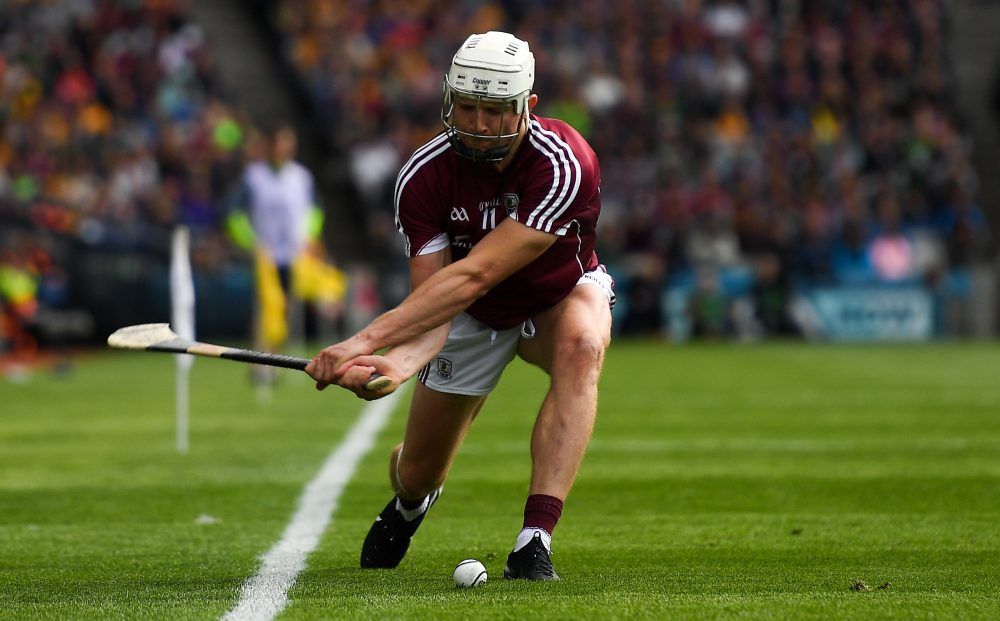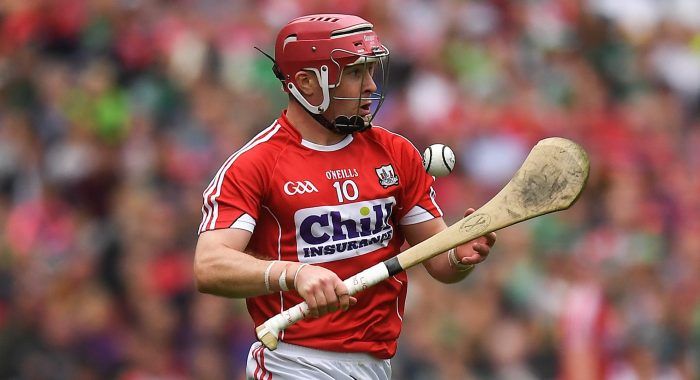If any tweet summed up hurling people, it’s this one.
Donal o’ Grady’s nit picking analysis is wrecking the buzz of an unbelievable hurling weekend 😒
— OLLIE MORAN (@olmorfs) July 29, 2018
I’m not sure exactly what part of Donal O’Grady’s ‘nit picking’ that Ollie Moran was referring to but it was probably the below that wrecked his buzz.
Donal said:
“Today was very tactical. I felt it was a little bit like Wimbledon for a while, Limerick went up and got a score, Cork went up and got a score… no player would have touched the ball.”
Donal clearly broke the first commandment of hurling people – thou shalt not find any fault with our great game.
It was brilliantly exciting because of the two draws but it did feel like Wimbledon for a while – or basketball – and the stats bear that out. There were 130 scores over the 197 minutes between the two games. There were 214 shots at the target, an average of just over one shot per minute.
Is it wrong to wonder why all these shots at goal happened?
Can we even make the argument that the standard of shooting has gone up when there were 73 wides, with more dropping short, over the weekend?
There is a theory in economics called diminishing marginal utility – meaning that the first unit of consumption of a good or service yields more utility than the second and subsequent units, with a continuing reduction for greater amounts
A simple explanation is that if I really fancy a cup of tea and drink one i’ll really enjoy it. I might have another one but it won’t be as enjoyable. If I have a third then it will be less enjoyable again and by the time if drink 10, I’ll be sick of drinking tea.
On today's GAA Hour Hurling Show @Woolberto chats about the hurling people of Twitter going slightly overboard…
@jjdel82 has some social media advice… pic.twitter.com/wPKDJxVSJF
— The GAA Hour (@TheGAAHour) July 30, 2018
Did we see too many shots at goal over the weekend?
There were shots at the goal at a rate of over one per minute and there were spare men all over the field – I hadn’t witnessed this extreme before in hurling. Points were flying over, for both teams, at such a rate that the score didn’t really get interesting until the last 10 minutes. If Cork had held out for the last eight minutes and won by six the narrative would have been so much different.
So what is the reason for all these attempted scores?
It’s very interesting that, while a lot of people believe it’s the lighter ball travelling long distances, according to Christy O’Connor in his RTÉ column, “of the 214 shots taken, only 16 (which includes frees) were launched from beyond the 65-metre line.”
For me, it boils down to the half forward lines dropping deep in hurling. This is a relatively new phenomenon started by Kilkenny and borrowed from Gaelic football. Every team now has a half forward line that is mobile and very hard working but, crucially for some teams, they’re also able to deliver quality ball and score themselves.
Historically in football and hurling, it was the centre forward that foraged around the filed for breaks and tried to drag the centre back out of position. Dragging the centre back out of the middle left oceans of space for midfielders to break into. We see Galway using it to huge effect with Joe Canning and David Burke.

Throughout my career, numerous managers were obsessed with not leaving the centre open. In fact, the centre back would be encouraged to hit anyone that attempted to break down the middle – put him on his arse was the not-so-subtle message.
Nowadays, in both hurling and football, it’s not just the number 6 that has that decision to make, it’s the entire half back line.
The tactics here are simple. If the half back line follows their man, they leave their full back line vulnerable. With the quality of ball now being delivered into full forward lines, it’s very dangerous to leave them exposed. Most half back lines are allowing the opposing half forwards off to work back and not following them all the way – instead, sometimes, like on Sunday, just holding the half back line.
However, in hurling, when the ball can travel so far, is there any point in holding? Look at the ball Limerick hit to Gillane on Sunday, there’s no half back line in the country that would intercept that. Cork play such quality ball into their forward lines that the Limerick half back line wasn’t up to much to stop it either.
Crucially, the half forwards that are given a free role are having a field day. They’re available for quick puckouts, they deliver quality ball inside, bypassing their marker, and they score themselves. Look at the scoring year Daniel Karney is after having. Look at Tom Morrissey, David Reidy and Gearoid Hegarty.

On Sunday, to me watching on TV, it looked like the only lines of the field that were marking their men properly were the two full back lines.
The solution is for wing half backs to follow their men. Let the centre back hold his position and allow only the centre forward a free role – he can be picked up by a midfielder. The centre back should hold the centre back position to stop runners but immediately turn and drop deep if the ball goes over his head to attempt to double up on the full forward.
If the ball goes into the corner then it’s the corner back’s responsibility in a one on one but the centre back is on cover to prevent a goal.
Limerick and Cork are two of the best exponents of working half forward lines that can score combined with brilliant deliveries into their full forward lines. It’s no surprise that in the two games they played each other in the championship this year Cork have scored 3-56 and Limerick 3-60.
While tactics and zonal marking are all great, and often work in football because the ball can’t travel so far, sometimes the old advice you got when you played at juvenile level is still the best:
Go out there and mark your man. Give him nothing.



















































